To bee or not to bee--a photographer.
Capturing images of honey bees is a delightful leisure activity.
You don't have to sign up for a safari on another continent, or invest in thousands of dollars worth of camera gear.
You can do it all in your backyard (especially if you provide bee friendly plants). Or, you can head for a bee garden or park.
Lately, my objects of interest are the honey bees foraging on our tower of jewels (Echium wildpretii). Earlier this spring, five towers of jewels graced our backyard. Now we're down to one; the others are spent. (They're biennuals and have completed their life cycle.) The sole Echium apparently doesn't know it's time to quit; it has been blooming off and on since April.
Which is wonderful for the bees, beekeepers and photographers!
To get photos of honey bees, I don't poke 'em, prod 'em or pin 'em. I don't spray 'em, glue 'em or freeze 'em. The bees do what they do naturally; I am a visitor in their habitat. I quietly pull up a chair--keeping low to the ground and as obscure as possible--and watch them. No, they won't sting you when they're foraging. They are more likely to show defensive behavior when you're too close to their hive entrance (such as blocking their flight path); when you haven't smoked the hive properly; or when you swat at them.
Lighting is everything. Photography, in Greek, means "writing with light" and that's what you do. Write with light. A little backlighting and a honey bee absolutely glows. Adjust your camera settings and you can stop a bee in flight or capture the redness of its tongue (proboscis).
Early in the morning is the best time to photograph bees. Their flight muscles haven't quite warmed up yet; they move at a slower pace; and they linger longer on the blossoms. One of the bees below clung to the same Echium blossom for two hours before it buzzed off.
These photos were all taken around 7 a.m. the same day on the same plant. The tools: a Nikon D800 camera and a 200 mm macro lens.
Cameras are just that--a tool. They don't make the image; the photographer does. Folks who say "You must have a nice camera" don't understand the creative process or the making of an image. They would never tell a gourmet cook "You must have a nice set of pots and pans" or an artist "you must have some nice brushes" or an athlete "You must have a nice pair of shoes."
That being said, bee photography is something each of us can do, each in our own way.
Read your camera manual. Know the settings. Know what your camera can and cannot do. Learn from other photographers. Look at photos in art galleries, in publications, or on the web. Then head out for a bee safari.
On an African safari, you may not find "big game." But on an insect safari, you will always find "little game."
Always.
Attached Images:
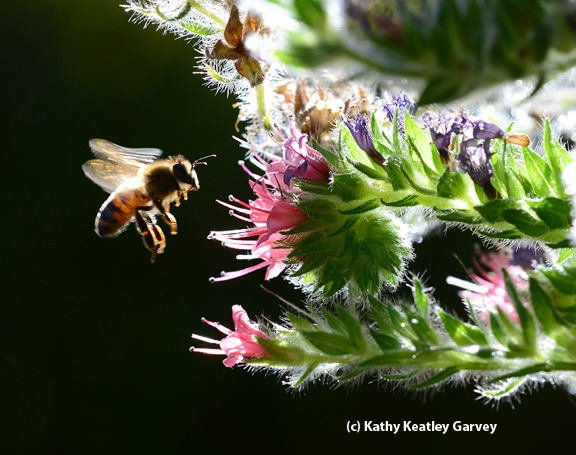
Backlit honey bee heading toward tower of jewels in the early morning. (Photo by Kathy Keatley Garvey)
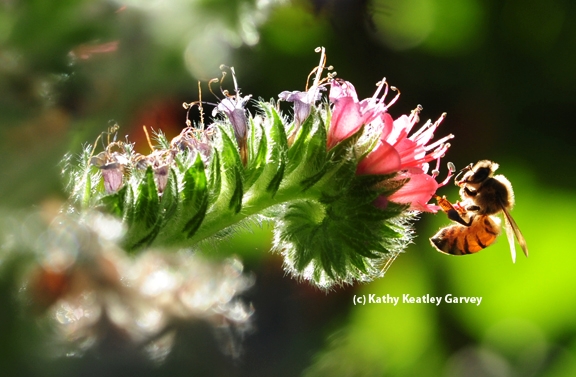
The glow of a honey bee in the early morning light. (Photo by Kathy Keatley Garvey)
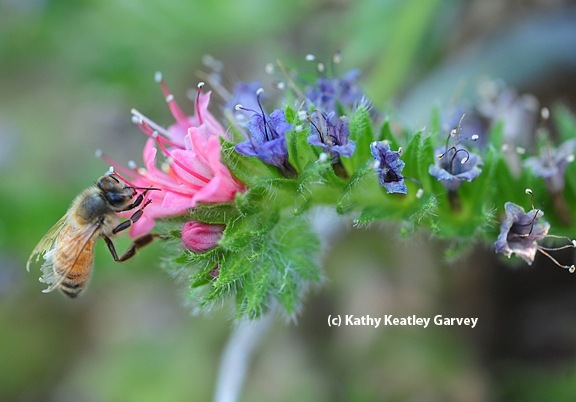
Pastel colors, almost like a watercolor. (Photo by Kathy Keatley Garvey)
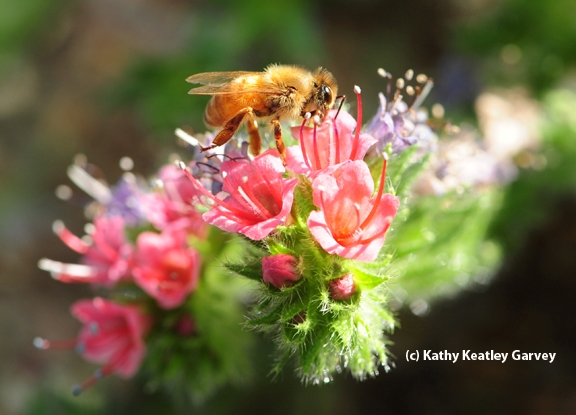
Morning light shining on honey bee. (Photo by Kathy Keatley Garvey)
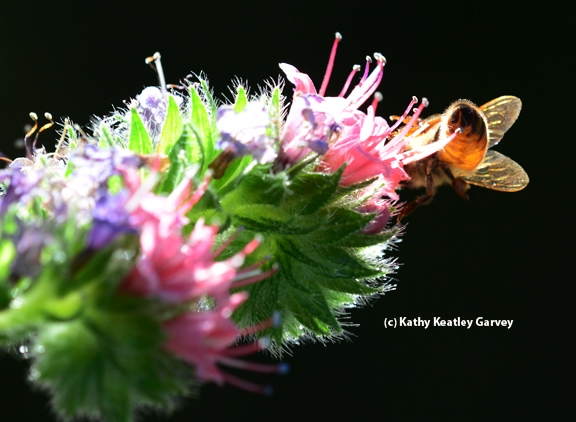
This is the end. (Photo by Kathy Keatley Garvey)